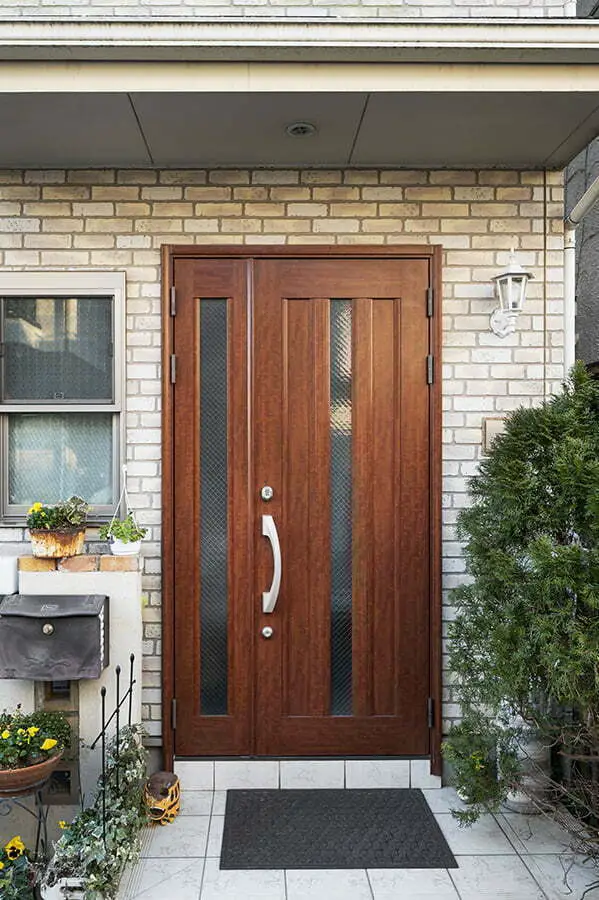Yes, polymers can be used in windows, door frames, and other building hardware.
Polymers are increasingly being used in the construction industry for various applications, including window and door frames and other building hardware.
Polymers offer many benefits over traditional materials such as wood or metal, including greater strength and durability, improved insulation properties, and lighter weight.
This blog post explores the advantages of using polymers in window and door frames and other building hardware. We’ll also discuss some potential drawbacks to consider when making the switch to polymer-based products.
Key takeaways:
- Polymers can be used in windows, door frames, and other building hardware.
- Polymers offer benefits such as strength, durability, insulation, and lighter weight.
- Polymer window and door frames are easy to install and require less maintenance.
- Polymers like acrylic and polycarbonate offer exceptional durability and thermal insulation for window and door frames.
- Polypropylene and PVC are also commonly used in window frames and building hardware due to their strength, durability, and low maintenance requirements.
Window Frames

Window frames are the structures that hold windows in place and support them. Polymers can be used to create window frames, as they are solid and durable materials that can withstand various weather conditions.
Polymer window frames are also lightweight, making them easier to install than traditional metal or wood frames. Polymers come in a wide range of colors and textures, allowing homeowners to customize their window frame design to match the look of their home.
Polymer window frames require less maintenance than other materials since they do not rust or rot over time as metal or wood may.
Door Frames

Polymers can be used in door frames to provide a strong, durable, and lightweight material for construction. Polymers are made from synthetic materials such as plastic or rubber, which makes them resistant to weathering and corrosion.
They also have excellent insulation properties, making them ideal for use in door frames. Polymer door frames are easy to install and require minimal maintenance over time.
They come in various colors and styles so that homeowners can choose the look that best suits their home’s aesthetic.
Building Hardware
Building hardware refers to the various components used in construction projects, such as windows and doors. This includes items like door knobs, hinges, locks, frames, and other pieces of hardware necessary for a building’s structure.
Polymers can be used in these types of building hardware to provide strength and durability while also being lightweight and cost-effective. Polymers are often used in window frames as well. They are easy to model into different shapes and sizes to fit any space or design requirement.
They are also resistant to corrosion which makes them ideal for outdoor use. Polymers have excellent insulation properties that help keep buildings warm during cold weather.
Specifics: Acrylic and Polycarbonate Use in Window and Door Frames
Acrylic and polycarbonate are two types of polymers that have gained popularity in the construction industry for their use in window and door frames. These materials offer several advantages over traditional options like wood or metal.
One key advantage is their exceptional durability. Acrylic and polycarbonate are highly resistant to impact, making them ideal for areas prone to extreme weather conditions or high traffic.
They can withstand strong winds, heavy rain, and even hail without cracking or warping.
Another benefit is their excellent thermal insulation properties. Acrylic and polycarbonate frames provide effective insulation against heat transfer, helping to maintain a comfortable indoor temperature while reducing energy consumption for heating or cooling purposes.
These polymer-based materials offer enhanced design flexibility compared to other frame options. They can be easily molded into various shapes and sizes during manufacturing processes, allowing architects more creative freedom when designing windows and doors with unique aesthetics.
Furthermore, acrylics come with inherent UV resistance properties that prevent yellowing or discoloration over time due to sun exposure. This ensures long-lasting clarity of windows made from this material without compromising on visual appeal.
Polycarbonates also possess remarkable strength-to-weight ratios which make them suitable for large window panels where structural integrity is crucial while keeping the overall weight manageable.
Acrylics’ durability combined with excellent thermal insulation capabilities makes them an attractive choice for window frames in both residential homes as well as commercial buildings alike. Similarly, polycarbonates’ strength-to-weight ratio along with its impact resistance qualities make it a preferred option especially when larger glass panels are required.
Role of Polypropylene and Polyvinyl Chloride in Building Hardware
Polypropylene is known for its high strength, durability, and resistance to chemicals and moisture. It is often used in window frames due to its excellent thermal insulation properties.
On the other hand, PVC is a versatile polymer that offers several advantages for building hardware applications. It has good weatherability, meaning it can withstand exposure to sunlight without degrading or losing its structural integrity.
This makes PVC an ideal choice for outdoor window frames and door components.
Both polypropylene and PVC have low maintenance requirements compared to traditional materials like wood or metal. They do not require painting or sealing as they are naturally resistant to rotting, warping, rusting or corroding.
These polymers offer design flexibility as they can be easily molded into various shapes during the manufacturing process. This allows architects and designers more freedom when creating unique window frame designs that complement the overall aesthetics of a building.
Pros and Cons of Using Polymers As Construction Material
Like any other material, they come with their own set of advantages and disadvantages.
One major advantage of using polymers in construction is their lightweight nature. Compared to traditional building materials such as wood or metal, polymers are significantly lighter.
This makes them easier to handle during installation and reduces the overall weight load on the structure.
Another benefit is that polymers are highly resistant to corrosion and decay. Unlike metals that can rust or wood that can rot over time, polymer-based materials do not suffer from these issues.
This makes them ideal for outdoor applications where exposure to moisture or harsh weather conditions is a concern.
Polymers offer excellent insulation properties which contribute towards energy efficiency in buildings. They have low thermal conductivity which helps in reducing heat transfer through windows and doors frames made from these materials.
On the flip side, one drawback of using polymers is their lower strength compared to some traditional building materials like steel or concrete. While they may be sufficient for certain applications such as window frames or door panels, heavy structural components might require additional reinforcement when using polymer-based alternatives.
Furthermore, although many types of plastics used in construction are recyclable nowadays; there still remains a concern regarding environmental impact due to non-biodegradable nature of some plastic compounds used within certain polymer formulations.
Environmental Impact of Polymer Use in Construction
One significant advantage of polymers is their recyclability. Many polymer-based building materials can be recycled and reused, reducing waste and conserving resources.
The production process for polymers generally requires less energy compared to traditional materials like wood or metal.
However, it’s important to note that not all polymers are created equal when it comes to their environmental impact. Some types of polymers may release harmful chemicals during manufacturing or disposal processes if not handled properly.
It is crucial for manufacturers and builders alike to choose environmentally friendly polymer options that minimize these risks.
Furthermore, while recycling offers a sustainable solution for managing polymer waste, proper infrastructure must be in place for effective recycling practices. Without adequate facilities and systems in operation at local levels, the potential benefits of using recyclable polymers may not be fully realized.
To mitigate any negative environmental impacts associated with polymer use in construction projects further steps can also include optimizing designs by reducing material usage wherever possible without compromising structural integrity or safety standards.
Maintenance and Durability of Polymer-based Building Hardware
One key benefit is their resistance to corrosion, which makes them ideal for use in areas with high humidity or exposure to harsh weather conditions. Unlike traditional metal frames, polymer-based window and door frames do not rust or corrode over time.
Polymers are known for their excellent resistance against rotting, warping, and cracking. This means that they can withstand the test of time without requiring frequent repairs or replacements.
Their inherent strength allows them to maintain their structural integrity even under heavy loads.
Another advantage of polymer-based building hardware is its low maintenance requirements. Unlike wood frames that need regular painting or staining to protect against moisture damage and UV rays from the sun, polymer materials are typically resistant to fading caused by sunlight exposure.
To keep your polymer-based building hardware in optimal condition, simple cleaning with mild soap and water is usually sufficient. Regular inspections should be conducted for any signs of wear or damage so that necessary repairs can be made promptly if needed.
Due to their corrosion resistance properties along with minimal maintenance needs and long-lasting durability characteristics; using polymers in window and door frames as well as other building hardware proves highly advantageous in terms of reducing costs associated with upkeep while ensuring a longer lifespan for these essential components.
FAQ
Where are polymers used in construction?
Polymers in construction are used in various domains including flooring, windows, cladding, rainwater, pipes, membranes, seals, glazing, insulation, and signage.
What polymer is used as a building material?
The polymer most commonly used as a building material is polyvinyl chloride (PVC).
Why polymers are used in construction?
Polymers are used in construction due to their ability to create durable, cost-efficient, and energy-saving materials and structures.
How has the incorporation of polymers improved the quality of construction materials?
The incorporation of polymers in construction materials has improved their quality by enhancing properties such as durability, lightweightness, resilience and resistance to weather conditions.
What future advancements are predicted in the utilization of polymers in construction?
Future advancements in the utilization of polymers in construction likely involve the development of more sustainable, durable, and self-healing materials that can adapt to changing temperatures and conditions, reducing maintenance costs and extending the lifespan of structures.
Are there significant environmental implications due to the use of polymers in building construction?
Yes, the use of polymers in building construction can have substantial environmental implications, particularly due to their non-biodegradability, their production process that often involves non-renewable resources and releases pollutants, and their disposal which may release toxic materials.
Recap




